Rye Rover Rivals Real Rig
MCMURDO STATION, ANTARCTICA– Eighth grade science students at Rye Middle School in Rye, New Hampshire, got into the act in Antarctica. Under the direction of their teacher Robin Ellwood, they built a submersible robotic camera that was launched in the Ross Sea.
Ms. Ellwood, a veteran science teacher, is also an accomplished ice diver working with a science research group in Antarctica’s Dry Valleys. Headed by Dr. Peter Doran from the University of Illinois, they are studying the fresh water lakes of that remote region. The lakes form primarily from glacier runoff, as it rarely snows and never rains in this part of the continent.
This year the team brought down the Endurance, a large robotic camera and data collector, or ‘Bot’ as it is affectionately called. Gathering data in larger amounts and in a shorter time than humans could do from the surface or diving, this sophisticated machine will map the floor, and provide water analysis of these remarkable lakes. You can learn more about their project and see pictures of the Bot here.
Not to be left out of the project, the Rye students designed and built their own robotic camera which had to be able to function in the extreme cold salty water of the Antarctica ocean. Getting the neutral buoyancy just right and using materials that were appropriate in Antarctica’s fragile environment provided many challenges, but all were well met.
“ScubaDoobaDoo” was successfully launched in the ocean and took its first underwater video in the Ross Sea, Antarctica, November 2008. Its performance was outstanding, it was easy to maneuver and the videos were excellent, reported Ms. Ellwood.
The students can be very proud of their accomplishment. The students’ project was funded in part by the school’s PTA.
ScubaDoobaDoo’s camera in front uses the LED light source next to it. Under the ice in Antarctica it is not only very cold, but very dark. The switch box houses the controls: right and left motors for turning and forward and back motion, the top motor for up and down motion. The video is sent to the DVD player through the 100 foot cable attached to the camera.
Next to the Bot, ScubaDoobaDoo was overheard saying “When I grow up, I want to be like him.” He is well on his way.
In the video below, see ScubaDoobaDoo perform in one of the large aquarium tanks in McMurdo.
Get the Flash Player to see this player.


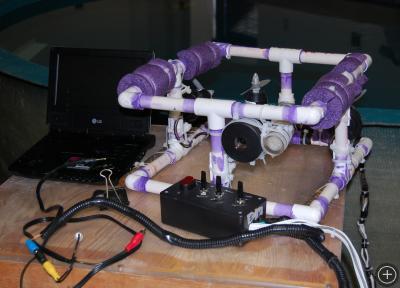
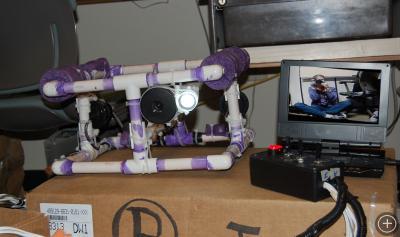
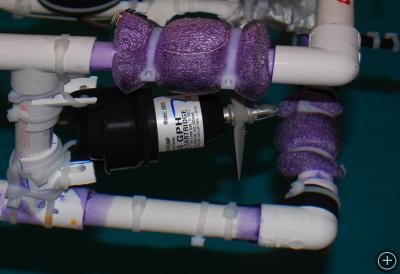
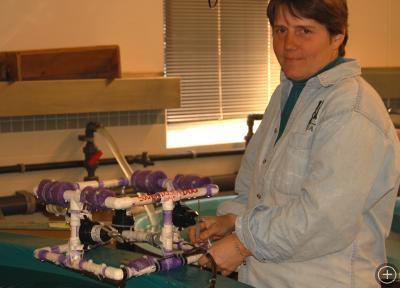
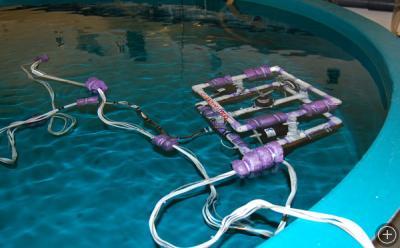
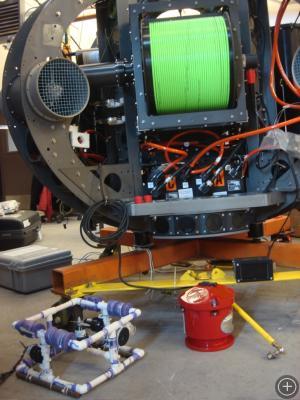

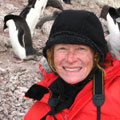

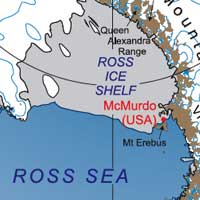





I was just catching up with some of your posts today and was going to comment, but didn’t get to it. Later, I saw the tweet from the Exploratorium’s twitter account about Rye. Curious, I went back. It’s such a great opportunity for Robin Ellwood’s students to be able to participate in projects that are related to research in the polar regions. It’s encouraging to know teachers, researchers and organizations make efforts to connect students with real projects and research. Thank you!
We (7th grade students and I) learned about you, Jean, Dr. Ainley and the penguin research through Robin Ellwood’s journal entries. We were not sure she was going to see a penguin on this trip, but she got to do more than see them! We didn’t expect to learn about penguins on this trip, so we were pleased Robin was able to visit your lab and travel to the colony. Since then, we have been keeping an eye on twitter and reading the posts.
Our school is currently on break and I’ve been exploring the penguinscience.com website. I’m impressed with the work you’ve done on the website. My students will be exploring it after break! Thank you for all your work you do and for allowing us to follow along!